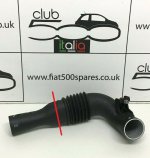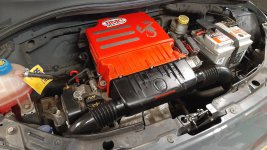The air intake pipe (I think that's what it is) is missing from my daughter's Fiat 500 Lounge 2010.
Does anyone have a photo of what needs replacing, please? I am not sure if these pipes differ according to model and year?
What is the effect of driving without this pipe?
Would this normally be removed during a regular service?
Thanks

Does anyone have a photo of what needs replacing, please? I am not sure if these pipes differ according to model and year?
What is the effect of driving without this pipe?
Would this normally be removed during a regular service?
Thanks




